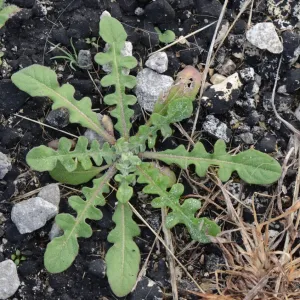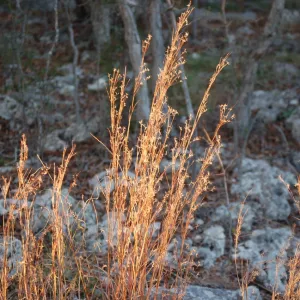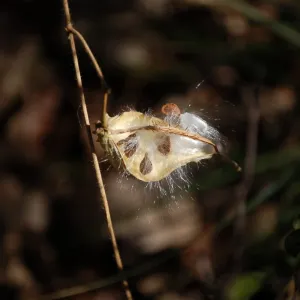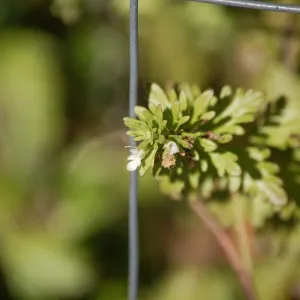By Delmar Cain – Boerne Chapter, Native Plant Society of Texas
Published in the Boerne Star on January 17, 2014.
It is not the most fertile time of the year for inspiration for an article about native plants. The cold weather has eliminated the last remaining flowers and leaves on the fall bloomers and many of the spring bloomers are still in small cryptic rosette shapes that defy identification to all but the most skilled botanists. It is a time when many are heard to repeat the words of Kip Kiphart’s astute naturalist friend, “That is an interesting plant that I have seen before and I will tell you what it is in April.”
I got the bright idea a few years ago to start a picture library of rosettes so that I could identify the plants earlier than April. But the project required a more scientific bent than I was able to muster. I took lots of pictures, but didn’t mark the locations. Between the browsing of axis deer, whitetail deer, and rabbits and compounded by my poor memory, I may have documented the rosettes of five plants, four of which I already knew. My family should be grateful that I didn’t try to earn a living as a scientist.

One rosette that I did learn is one that I have mentioned in early spring in years past. The rosette of the Malta starthistle (Centaurea melitensis), that aggressive invader from Europe and North Africa, is gathering its strength for its attack at this time of the year. I use herbicide only on very rare occasions, but this is one of those occasions. If you can recognize and spray this pest early, you will be more effective at killing it and you will minimize the risk of killing surrounding desirable plants. The alternative is a plant with hundred of seeds and a taproot that can go to a depth of 12 inches.

This season also brings out a bit of Hamlet-lite in me. “To mow, or not to mow: that is the question….” I could lower the profile of some of the spent seed heads and tidy some of the taller species without causing any damage. The mower would also mulch the dead stuff for a natural fertilizer.
But this is the time that the leaves and the tall stems of the little bluestem grass (Schizachyrium scoparium) are reaching their most attractive stage of reddish rust. But if I wait the new spring growth of some of the other plants will be interrupted. Fire in the summer is always a possibility. Maybe hand shears are the answer. The county and many of my neighbors don’t seem to struggle with this problem. Why me?

Indecision is not a problem, but an opportunity for nature. Long after most of the green milkweed vines (Matelea reticulata) have opened their seedpods for the wind to airlift their seeds to new environs, I saw a seed floating up the driveway today. For a successful landing, today’s conditions may be equally as good, better or worse than the conditions were during the last two months. But nature has it covered since on each windy day during that time, other green milkweed vines were releasing their seeds. If I could manage that kind of seed distribution, I might even get a madrone to grow somewhere in my yard.

I have done better with another plant that I found growing along Spring Creek. While walking along the creek a few years ago, Bill Ward and I collected some seeds from what I think is a cut-leaf germander or lacy germander (Teucrium laciniatum). I say I think, because the images of the plant from Enquist book, “Wildflowers of the Texas Hill Country,” the image from the USDA Natural Resources Conservation Service and the images from the Lady Bird Johnson Wildflower Center appear somewhat dissimilar. The plant from the USDA website seems more similar to the plant that I have.
In any event I was able to cultivate the seeds and now have the plant growing in three or four places. It is quite hardy, needs little water, does well in part shade and even grows successfully unprotected from the deer. I mention it today because even after our recent cold weather, it is still green. What is even more amazing is that I saw an American snout butterfly land on a small bloom that is at the tip of the stem. Imagine–inspiration by following a snout.
Enquist book indicates that the bloom time for the cut-leaf germander is April to June. The Wildflower Center indicates that the bloom period is from May to September. Is my plant ahead of its time or just indecisive? Of course, I may be wrong on the identification of the plant. The American snout could care less and did not hesitate to land.


